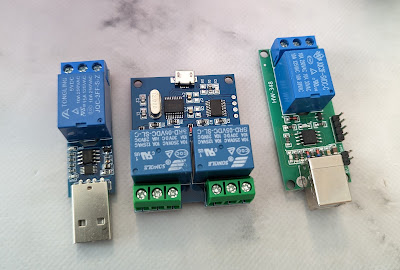I've recently been playing with telephone dials again, and discovered that a handheld dial tester existed which would save faffing around with an oscilloscope. I managed to pick one up on eBay for slightly more than I would have liked to have paid, but it is in perfect condition so I can't complain too much.
Naturally I didn't read the manual and immediately started playing with it, but it turns out it doesn't function quite like how I'd anticipated. Still, I'll probably get some use out of it.
Marrold's Blog
29/07/2024
Dialled Digit Analyser 1A
18/06/2024
Checking if a telephone dial is within spec without removing it from the phone.
I've previously written a blog post on using a Digital Oscilloscope to adjust the dial in a telephone, but it assumed the dial had been removed for stripping and cleaning prior to adjustment. I've recently been experimenting with some telephones to figure out the tolerances for both the Pulses Per Second and Make/Break ratio of the Grandstream HT8XX ATAs and wanted to check a dial without disassembling the whole phone.
I wasn't quite sure on the best way to go about it so I asked on the Telecommunications Heritage Group mailing list and James Campbell kindly replied with a simple way of checking the dial.
05/12/2023
BBC Micro: SerialFS and the IFEL Flash ROM board, a match made in heaven.
I've been playing around with BBC Micro Computers recently. I've "accidentally" come to own 3 of them, having picked one up cheaply then finding 2 more that I intended on refurbishing and selling but couldn't bring myself to let go.
I like to demonstrate retro computing and communications hardware at various events which means the roles of the BBCs can change fairly frequently, which requires swapping out the EPROM chips inside the machines that contain the programs. This is something I'm not a big fan of, as it can result in bent pins and stresses the 40 something year old PCB and sockets.
Fortunately I've found a solution, the IFEL Flash ROM board and SerialFS.
30/11/2023
Building a USB Serial to 5 Pin Domino DIN Cable
The BBC Micro computer uses an almost extinct 5 Pin "Domino" DIN connector for its RS423 (RS232 compatible) serial port. I wanted a neat cable to connect my BBC computers to things like SerialFS and TCPSer but there wasn't really anything on the market that was neat and compact.
I needed a USB to RS232 level cable, but without a DB9 on the end, as the USB Serial chip is often inside it. Many cables available online are TTL level which makes them unsuitable. After a bit of hunting I discovered the programming cable for the Kenwood TM-D710 Radio uses RS232 levels and Tx, Rx, Gnd, RTS and CTS which is exactly what we need, so I set about modifying it.
06/04/2023
Testing USB serial relay compatibility with Mikrotik RouterOS - Fail
I've got some Amateur Radio projects in the pipeline that will require the ability to turn off the radio remotely in the event of a fault developing. This needs to be out-of-band and accessible to more than one "closedown-operator" so if the main operator isn't available, someone else can shut the station down.
The projects all require a computer of some sort, so I had an idea that I could use a USB serial relay to switch the power to the radios off, assuming they'd be easy to use and compatible with both standard form factor PCs as well as SBCs like Raspberry Pis.
I quickly realised this wouldn't be ideal as the situation might arise where the computer has crashed and left the radio transmitting, and it wouldn't be possible to switch off the relay, so I needed an alternative. As it happens I was also planning on including a Mikrotik router in these builds as they've gained the nickname "The Swiss Army Knife of Routers" and allow you to quickly setup tunnels and VPNs which are useful for remote access. Some models also have a USB port, and basic support for USB serial adapters, so I bought a few from AliExpress to test them out.
04/04/2023
Flashing MMDVM on an STM32 Nucleo using Raspberry Pi OS 11 / Bullseye
5 years ago I wrote a blog post on Flashing MMDVM onto an STM32 Nucleo with OSX. Well, good news patient readers, I'm back with a new post, this time doing the flashing from Raspberry Pi OS 11 / Bullseye.
 |
| F0DEI's MMDVM Board |
27/02/2023
GPS over 75 Ohm Satellite Cable
I needed to get a GPS signal for a couple of upcoming projects that use it for time synchronisation. The problem? Where I intend to place this equipment happens to be a windowless cupboard in the middle of the flat, and the metal roof blocks out the GPS signal.
However! The original builders ran satellite coax cable to each of the bedrooms and the living room and terminates in said cupboard, along with two feeds from the communal Satellite distribution, allowing you to "patch" services as you require. I'm curious how many residents have discovered this as its all hidden behind a blank face plate, but it has previously came in handy when I wanted to mirror the Satellite reciever to the bedroom and ended up with a rather hacky, HDMI over Ethernet over Coax solution with cheap boxes from China that effectively ran powerline over the Coax cable.
But GPS receivers are expecting 50 ohm coax, not the 75 ohm cable used for television distribution. Will it work?





